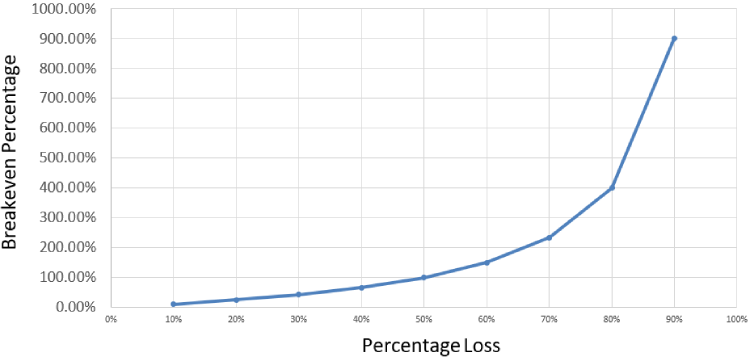Trait 3: Successful Traders Trade the Right Time of Day
Our data on trader performance shows that traders, on average, have a lower win percentage during volatile market hours and when trading through faster-moving markets. But, conversely, traders fair better when average pip movements are smaller, yielding higher win percentages. This attribute intuitively makes sense because there is a positive correlation between risk and reward. I.e., the higher the risk, the higher the reward. Or, to put it another way, if there is no risk present, it will be impossible to profit.
Thus, there is an inherent lure if the risk is present. Traders focus on the potential reward, not the actual risk. However, the risk is a genuine and present variable. There are many ways to measure risk, with one of the most popular being standard deviation or volatility.
When a financial instrument's standard deviation increases, its volatility increases, i.e., its risk increases. As such, there are critical times during a trading day when volatility will increase. For example, in the NFP release, volatility/risk is expected. Moreover, currency pairs have their unique risk characteristics. For instance, JPY volatility will respond to different calendar events than EUR or GBP.
Traders should consider the time of day because volatility increases the chance of loss. If the volatility is extreme, the loss suffered will burden recovery (refer to table 1).




Any opinions, news, research, analyses, prices, other information, or links to third-party sites contained on this website are provided on an "as-is" basis, as general market commentary and do not constitute investment advice. The market commentary has not been prepared in accordance with legal requirements designed to promote the independence of investment research, and it is therefore not subject to any prohibition on dealing ahead of dissemination. Although this commentary is not produced by an independent source, FXCM takes all sufficient steps to eliminate or prevent any conflicts of interests arising out of the production and dissemination of this communication. The employees of FXCM commit to acting in the clients' best interests and represent their views without misleading, deceiving, or otherwise impairing the clients' ability to make informed investment decisions. For more information about the FXCM's internal organizational and administrative arrangements for the prevention of conflicts, please refer to the Firms' Managing Conflicts Policy. Please ensure that you read and understand our Full Disclaimer and Liability provision concerning the foregoing Information, which can be accessed here.